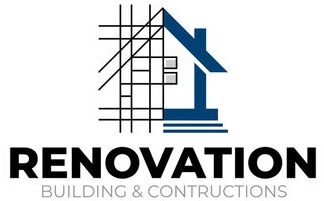It’s been a few days since you noticed that the water is having difficulty flowing through your pipes. You were dreading it and now it happens: the pipes are clogged! Unpleasant odors, unusable sink, washbasin or toilet… There can be multiple causes! But don’t panic, there are many techniques for unclogging pipes.
It is possible that the blockage comes from your home or a general blockage of the building’s column .
1. Unscrew the siphon to clean it
If the water in your sink or sink drains poorly, there may be a larger clog. You will then need to unscrew your siphon to see if the blockage has formed there. For this, it is preferable to install a basin or any other container, in order to accommodate the stagnant water from your siphon, when unscrewing it. Then, remove the debris that is cluttering it, and screw it back.
Easy as pie ! Don’t hesitate to wear gloves!
2. Run boiling water to dissolve the clog
If you realize that your pipes are completely blocked, because the water in your sinks, toilets or washbasins is no longer flowing, you can pour several liters of boiling water to destroy the blockage. The ideal is to be able to reach it quickly, because otherwise it will never come into contact with boiling water, due to stagnant water.
3. Use white vinegar and baking soda
The cause of bad odors, pipes therefore require regular maintenance. It could not be easier. Simply prepare a mixture of bicarbonate and white vinegar , or a variation based on coarse salt or soda crystals, pour into the pipes, leave to act for an hour, and rinse with hot water.
Simple things, for great results!
4. Pour a large amount of dishwashing liquid
Dishwashing liquid is known for its strong degreasing power , which can help dissolve deposits in your pipes. This method is accessible, very simple and can work miracles if the flow of water is slowed down due to a stubborn blockage.
Pour half a bottle of dishwashing liquid directly into the drain and let it act for around ten minutes .
Once this time has elapsed, replace the sink stopper and make sure it is secure.
Then fill the sink with very hot water (hot, but not so hot that you will burn yourself in the next step).
Open the pipe to allow all the water to drain out, taking any deposits and dirt with it.
Finally, rinse for 2 to 3 minutes with very hot water to thoroughly clean the pipe.
5. Pour a chemical designed to unclog pipes
If natural methods and traditional tools have failed to unclog the drain, you may want to consider using chemicals specifically designed to dissolve blockages.
Be careful, however: these products are generally very powerful , very aggressive , and must be used with caution. Indeed, did you know that repeated use of unblocking chemicals could damage your drain pipes ? In the long term, ducts can suffer from leaks.
Furthermore, these products are generally harmful to the environment . Use them only exceptionally!
6. Use a suction cup to suck out the clog
If you have a blockage in your sink or if you need to unclog your toilet , you can use a plunger to dislodge it.
In fact, the suction cup will create a draft of air which will displace the water . You will need to carefully block the aerator of your sink or washbasin to create a draft of air. The aerator is the hole allowing excess water to drain without overflowing your sinks or washbasins.
Make sure your suction cup covers the entire diameter of the hole before using it!
7. Use a ferret to completely remove the clog
The ferret is a tool known and used by all plumbers. This tool allows you to insert a flexible, but strong, twisted steel cable into your pipes to locate the location of the blockage. The ferret will allow you to destroy the clog, not just push it out . But, to be sure that you no longer encounter any problems, we advise you to use boiling water to destroy any debris that may remain after the ferret has passed through.
8. Clear the pipe with high pressure water
If, despite your best efforts, the pipe remains clogged, a high pressure cleaner with a drain hose could be a last resort solution, before calling a plumbing professional. Here’s how to use it.

